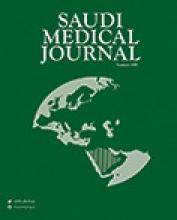Abstract
OBJECTIVE: Granulocyte colony stimulation factor (G-CSF) is generally used to prevent and cure the neutropenia associated with chemotherapy and bone marrow transplantation. In addition to its effects on neutrophil function, G-CSF was found to have the characteristic of modulating the cytokines in the inflammatory response. Then, the question to answer is whether it has any effect on fracture healing and to what extent? In this study, we test the effects of G-CSF on the healing of tibia fracture in a rat model.
METHODS: This study was performed at Harran University, Sanliurfa, Turkey between July 2003 and August 2004. Twenty female, healthy Sprague-Dawley rats, weighing between 250 and 300 gm were divided into 2 groups, and their tibiae broken. The rats in the G-CSF group were injected subcutaneous with 25ug/kg/day of recombinant human G-CSF for 7 days, and the ones in the control group with 0.9% sodium chloride. Rats were sacrificed 3 weeks after surgery and then radiological, histological and biomechanical evaluations were performed. Biomechanical tests were performed at the Middle East Technical University, Ankara, Turkey.
RESULTS: The median radiographic scores for the control group were calculated as 4.1, and 6.1 for the G-CSF group (p = 0.016). Cortex remodeling, callus formation, bone union and marrow changes values did not differ significantly (p > 0.05). Mechanical parameter (mean max-Load) values for the control group were found to be 24.0 ± 3.0 N, and 241.5 ±75.7 N for the G-CSF group (p = 0.001).
CONCLUSION: We found that G-CSF has an important effect on fracture healing. However, this effect requires further study.
- Copyright: © Saudi Medical Journal
This is an open-access article distributed under the terms of the Creative Commons Attribution-Noncommercial-Share Alike 3.0 Unported, which permits unrestricted use, distribution, and reproduction in any medium, provided the original work is properly cited.






